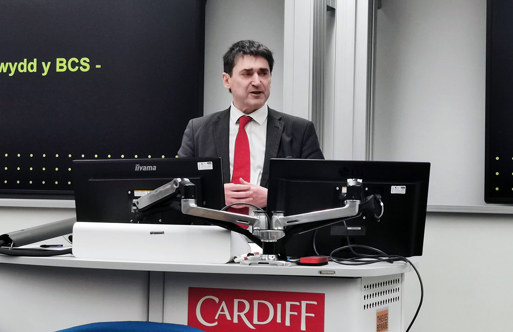C4ISTAR was the title of the conference I attended, organised by RUSI. C4ISTAR has to be my favourite acronym de jour. One of my personal highlights was discussing the merits of the integrated C2 interface of the game Battlefield 2 with General Nick Justice, US Army. Life is stranger than fiction!
Gary Lay from LogicaCMG gave a presentation on the lessons from the NHS IT project. He has recently moved from health to defence inside LogicaCMG, and from his presentation, I picked up the following as necessary components:
- Investment in infrastructure (bandwidth to the front line is a major challenge)
- Open architectures
- Open standards and protocols for interchanging information
This was very sensible, and very necessary. At the moment, if a command post has feeds from multiple different types of UAV or other video feed, they need a different console to run each system. This is reminiscent of the good 'ol mainframe days, and not very encouraging - what the web solved some time ago for the commercial world. However, trying to get defence contractors to get together and come up with interoperability standards is, shall we say, a bit tricky? Technologically, building a single interface for remote video feeds, even if it has to go on multiple platforms, is old hat. It is hard not to lay the blame on that with MOD procurement, but I think that would be a little glib. This really isn't easy!
One of the other challenges was the total mess with intelligence. I saw some great systems being demo'd for intelligence databases - giving you data visualisation and all that, so you can see and drill down on connections between people and organisations, even tying it in with front line C2 systems. The challenge is to make sure that squad leaders have the information they need to make the daily tactical decisions they are faced with. Put simply, if they attack one person or group, it could start all sorts of pointless trouble, but another person may be responsible for all sorts of trouble, and therefore a high priority. Putting this kind of information in the hands of a corporal on patrol is very hard, but the benefits will be a more effective force and fewer people getting killed.
However, where it gets complicated is in joint operations (army, navy, airforce) who run different systems and different procedures, yet need to share information. Where it gets *really* complicated is in joint operations between different nations! NATO operations in Afghanistan are a good case in point, where a single signals commander may have to deal with information sharing amongst force elements from no less than 17 nations inside NATO, and up to a further 50 outside NATO! That becomes 'challenging' when your UK system is designated UK secret eyes only so can't be shared by definition, your NATO systems are different again, and your Pakistani liaison officer can't access either!
Roll that lack of interoperability and joint-ness together, add in an environment hostile to any technology, training issues at all levels from privates to generals, and it's all a bit tough. Thankfully, at the risk of sounding jingoistic, 'tough' is what the soldiers joined up for.
There is no doubt that information management in the military has a lot to take from other areas, and that regarding open architectures and standards it is very much behind best practice. However, having seen a glimpse of what is going on, I have nothing but respect for the officers trying to make it all work in the field, and for those trying to get the best systems in place 'yesterday'.

















